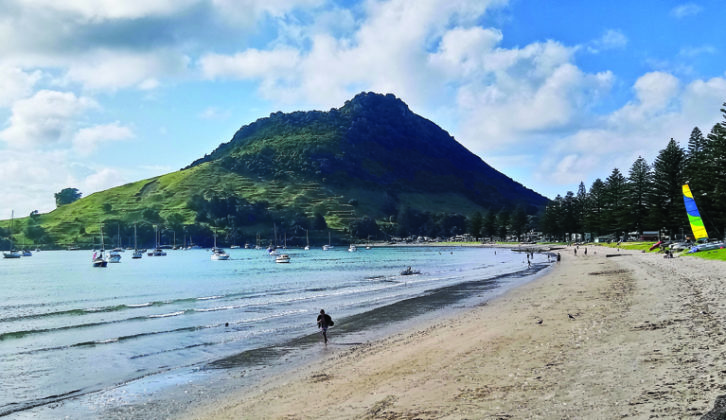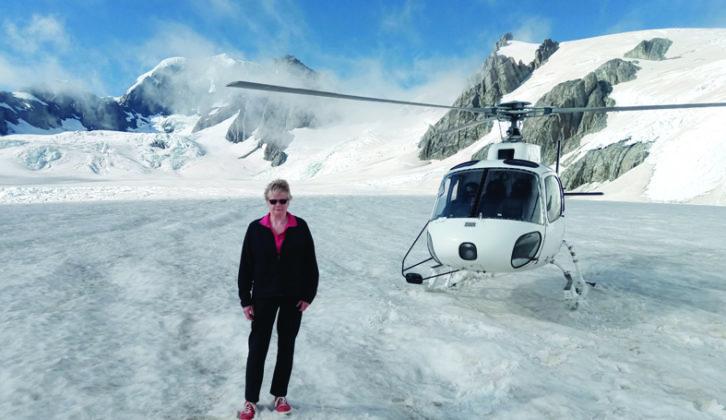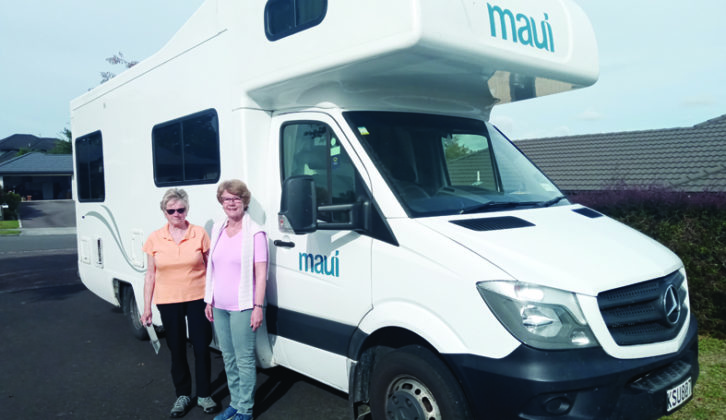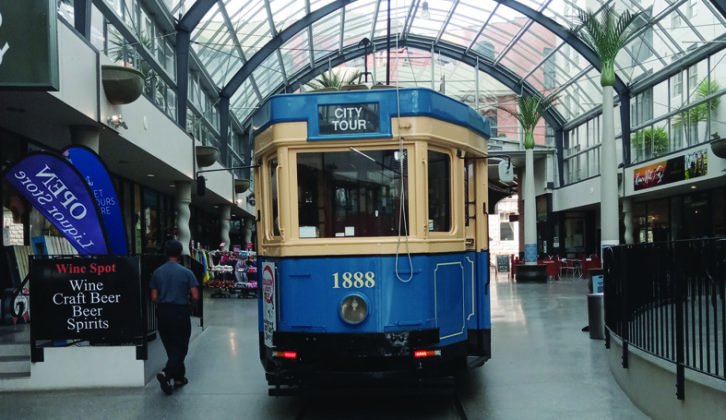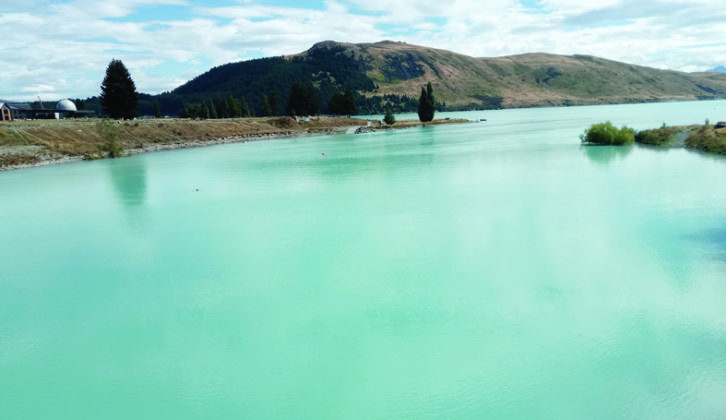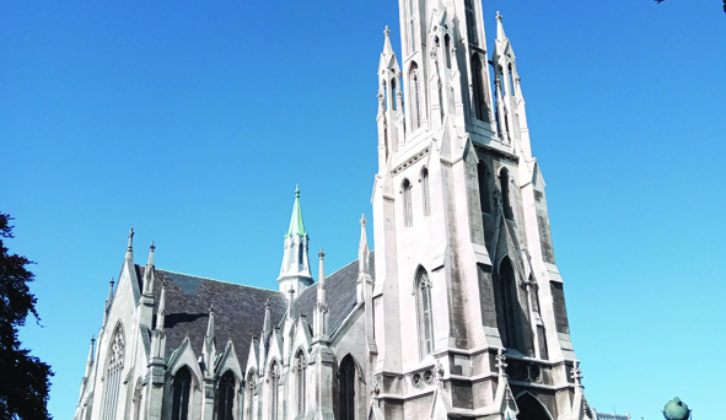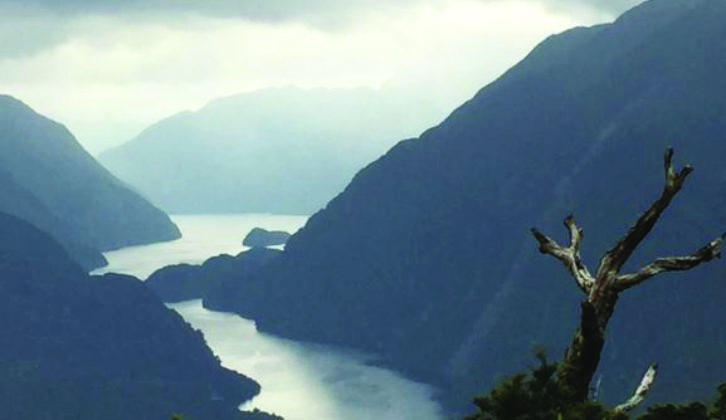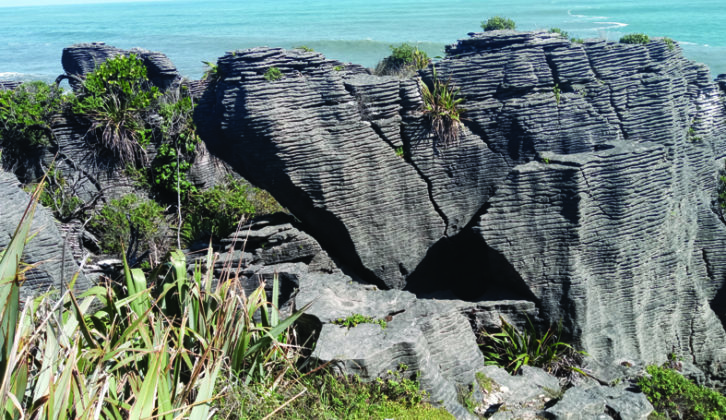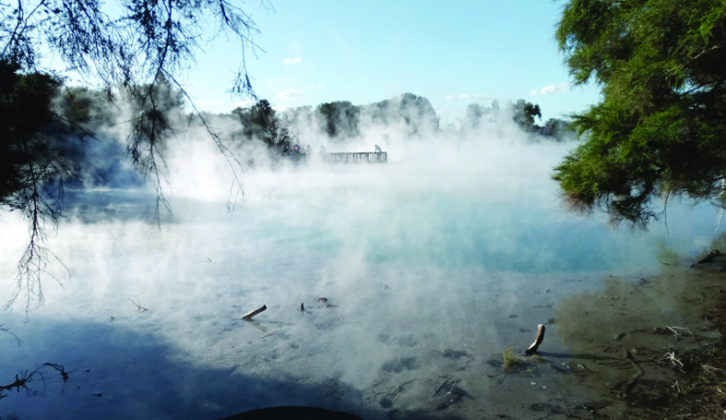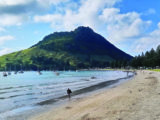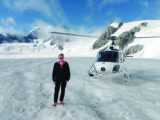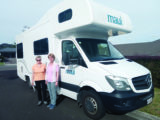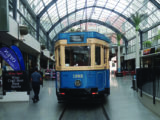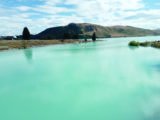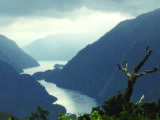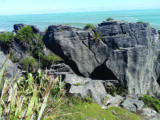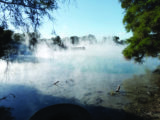Before picking up the motorhome we had hired to explore New Zealand, we spent a pleasant day in Christchurch, a city on the South Island that is largely defined by its earthquake-ridden history.
The aftermath of the latest two events (2010 and 2011) is clearly visible, the starkest reminder being the cathedral, still standing but with a gaping hole where the nave and spire should be.
Quake City, an information centre dedicated to the story of the earthquakes, was a memorable experience, but there were other highlights, too: the Botanical Gardens, a trip on a 1930s tram, the futuristic Christchurch Art Gallery and The Cellar Door, where you can taste the local wines.
The following day, we picked up the ‘van and set off for the Akaroa on the Banks Peninsula, 90km east of Christchurch. The route took us past the peaks of extinct volcanoes covered in golden vegetation and green trees, rising from turquoise lakes into the clear blue sky. It was a promising start!
Akaroa had a distinctly French air – many of the early inhabitants were settlers from France – but the main attraction is its fine marine life. We took a boat tour and saw pods of swimming dolphins, a colony of seals basking on the rocks and some white-slippered penguins, among the smallest penguins in the world.
Our next stop was Lake Tekapo, south-west of Christchurch and 700m (2300ft) above sea level. The scenery on the drive was amazing enough, but our first view of the lake made us gasp, so striking was its beauty, particularly because of its distinctive turquoise colour, created by finely ground particles of rock (known as rock flour) being held in suspension in the glacial melt. Unsurprisingly, swimming in the lake – safe but very chilly – is not a popular activity!
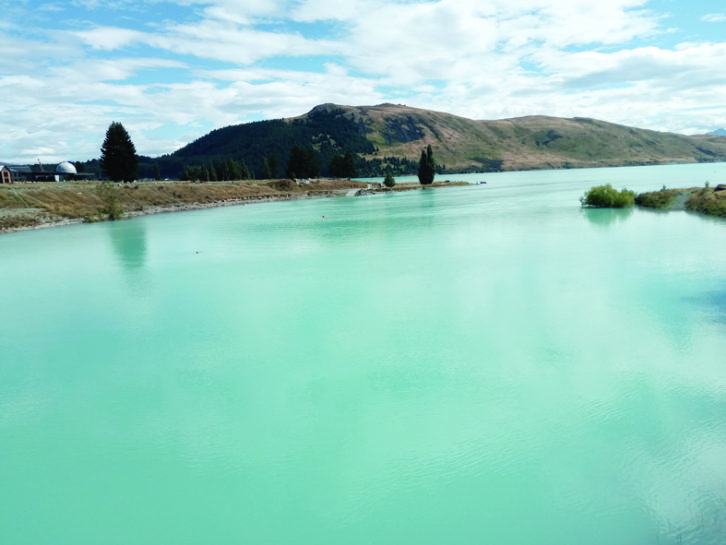
Next we headed south to Dunedin, which is a large metropolis by New Zealand standards, being home to some 130,000 souls. Dunedin derives its name from the Scottish Gaelic for Edinburgh, so some familiar place names were in evidence, including Princes Street, St Andrew Street and Queens Gardens.
Confident Victorian architecture abounds here, but the Art Deco movement makes its presence felt, in the shape of the railway station and the law courts. The station (dating from 1906) is now a monument rather than a working terminal, although the original period features have been immaculately retained in its ticket hall.
Striking skylines
The Anglican St Paul’s Cathedral, built in the 1910s, is Neo-Gothic in style, but more striking is the elegant 1870s design of the Presbyterian First Church, whose initial celebrant was Thomas Burns, nephew of the poet Robert Burns.
By the station is the Otago Settlers Museum, which chronicles the development of the county and the city from their origins in the 1860s, when gold was discovered, to the present day. Settlers initially came mostly from England or Scotland, but later there was an influx of people from China, whose mining expertise was much sought after.
Outside the museum, the Chinese Garden, built to commemorate the close connection between Dunedin and China, is a haven of peace, full of pagodas, bridges, rockeries and water lilies.
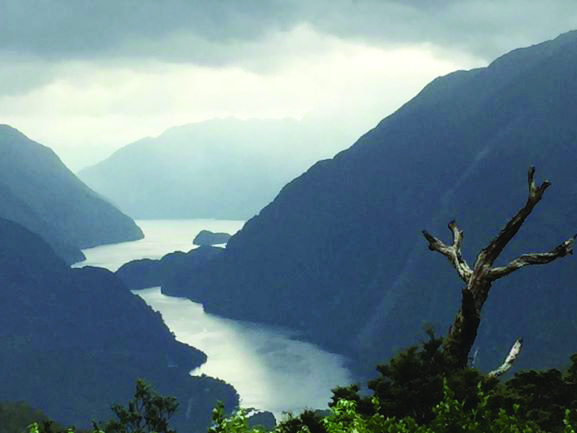
The next day, we set off westwards to Te Anau, to visit Doubtful Sound, one of the longest fjords in Fiordland. Our excursion to the Sound involved a 20-minute coach journey to Lake Manapouri, a boat trip across the lake, another short coach journey to the Sound itself and a three-hour trip alongside, to where it meets the Tasman Sea.
The second coach took us along what is reputed to be the most expensive road in the world (£2.50 per inch), which goes through dense temperate rain forests over Wilmot Pass.
Our second excursion was to see the Te Anau caves, which boast remarkable earth formations and house a large population of glow worms.
The drive through Haast Pass, on the way to Glacier Country heading north, was the most dramatic so far. After many miles of temperate rainforest, we arrived at Franz Josef, the township at the foot of the famous glacier named after the Austrian emperor by geologist Julius von Haast, who explored there back in the 1860s.
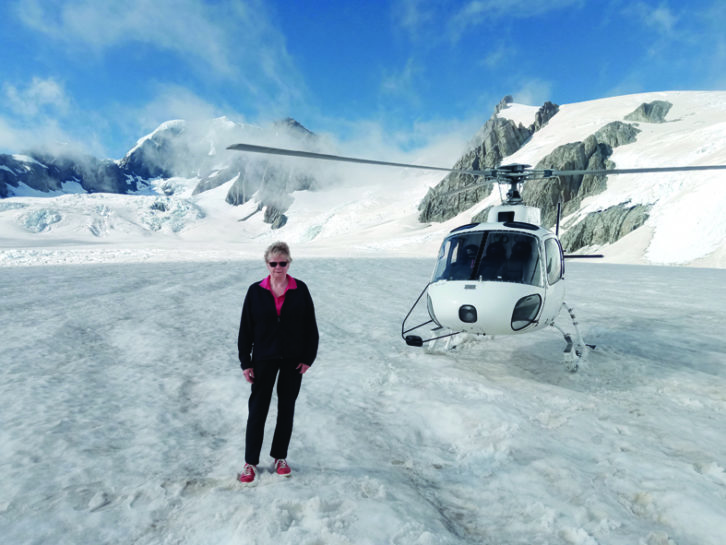
A helicopter tour gave us a close-up view of the three glaciers, Franz Josef, Fox and Tasman, and the summit of Mount Cook. In some places there are deep crevasses in the ice, formed by water descending from the mountain summits.
During the 30-minute flight we landed on the Fox Glacier and were bale to get out and walk around on the moon-like surface -rather spooky!
Coastal landscapes
We then headed for Westport on the coast road, which, we later learned, is ranked the second most beautiful stretch of road in the world after Malibu, in California. It is certainly difficult to imagine anywhere more spectacular.
On the way, we also saw the phenomenon known as Pancake Rocks, so named because the promontories look like stacks of flat pieces of limestone; these have been formed by the erosive action of the sea over many centuries.
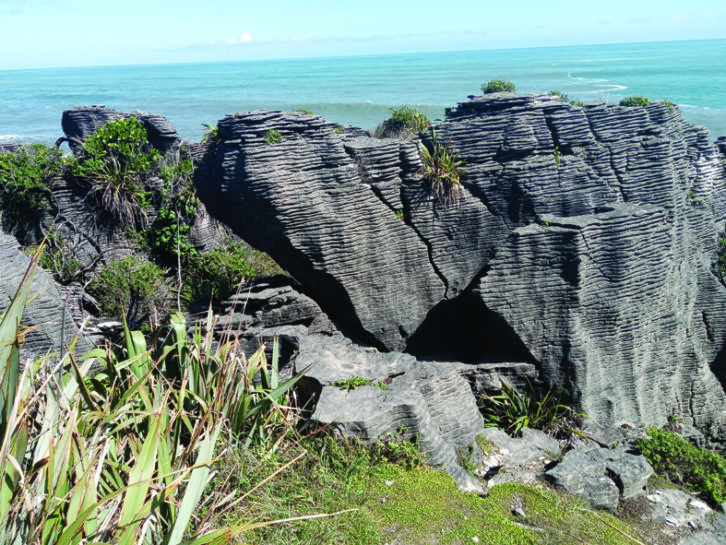
We then proceeded to Picton, from where the ferry leaves for Wellington. Picton is named for a Welsh general, Sir Thomas Picton, who fought and died at Waterloo – in civilian dress and top hat, because his uniform failed to arrive in time.
At first glance, Wellington has very little to distinguish it from many other modern capital cities – high-rise buildings adorned by globally recognisable brands, smart shops and countless cafés, bars and restaurants – but it should be remembered that earthquakes have largely defined the city that we can see today.
We walked along the harbour front to where the previous and current government buildings stand. The original, Old Government Buildings, were constructed entirely of timber in the 1870s, one of the largest such structures in the world. It was used for parliamentary or governmental purposes, but is now the law faculty of Wellington University. Opposite are Parliament Buildings – the Beehive (1979), Parliament Building (1922) and the Parliamentary Library (1899).
Wellington boasts two St Paul’s Cathedrals: one, built in 1866, is made of timber (currently closed for repair), while the other, Wellington Cathedral of St Paul’s, was completed in 1998. The latter is remarkable for its striking glass engravings and rose window, with stained glass reminiscent of the work of Marc Chagall.
We concluded our memorable visit with a cable car trip to the hills above the city.
Mountain ranges
Our next stop was Napier, on the east coast. The first part of the journey took us through the Tatarua Forest Park and across mountain ranges that rivalled some of those we encountered on the South Island.
Much of Napier was destroyed by an earthquake in 1931, after which, the authorities enlisted the unemployed to help rebuild the town, choosing to follow the architectural style of the time, rather than copying what had been there before. Hence the treasury of Art Deco buildings.
The following day, we travelled north to Roturua, via Lake Taupo, New Zealand’s largest lake, which lies on the Central Plateau, the heart of North Island’s volcanic activity. Roturua itself is a hive of thermal activity.
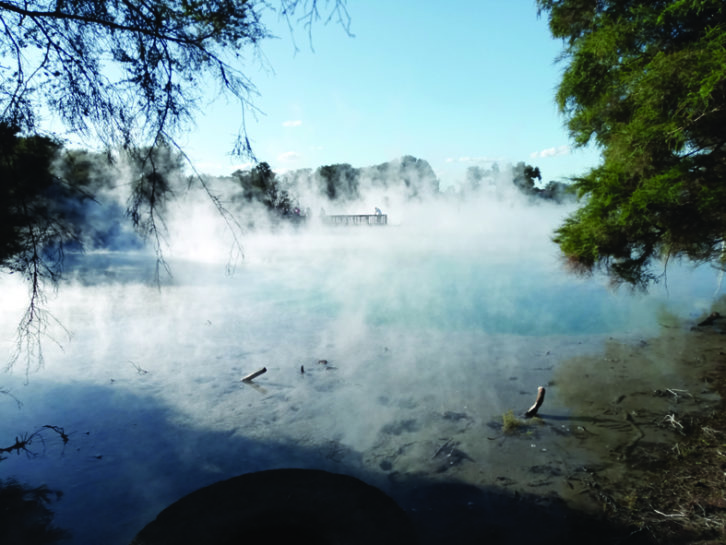
Over the past few days, our various news feeds had begun to reveal the growing seriousness of the Covid-19 situation, leading us to realise that we might need to change our travel plans fairly soon. Next day, however, we decided to set off for Tauranga and on the way, stopped off to admire the 250m-high Mount Maunganui, on the shores of the beautiful Bay of Plenty.
Sadly, by the end of that day, news of measures being taken around the world for the pandemic was so bad, we decided we should return home as soon as possible. New Zealand announced a total lockdown for non-residents from midnight.
We were lucky, and managed to secure two seats on a flight out of Auckland a week earlier than planned. We left Tauranga on the following day, intending to drop off the ‘van and spend the rest of the weekend exploring Auckland.
Tradition and modernism
Auckland, in common with many of the other New Zealand cities we visited, is very much a mixture of the new and the old; but here the modernist trend is even stronger, with few of the buildings being more than 100 years old.
The most notable is the Ferry Building on the waterfront, whose fine 1912 facade has been left intact, although the interior is now given over to smart bars and restaurants.
The following day, we opted to travel across to one of the many islands in the bay, Waiheke. The vegetation here is lush. The weather was fine, and we ventured down to the beach and for the first (and last) time on the trip, got our feet wet!
Returning to the city, we found it quieter than ever and the restaurants even emptier. However, we managed to spend a pleasant final evening in this charming city and next day, embarked on our homeward journey, which was uneventful, fortunately. Courtesy of Covid-19 we lost a week, which gives us a brilliant excuse to return!
TOUR ESSENTIALS
WHEN TO GO
We had assumed the weather would be similar to that of the UK in late summer and early autumn, whereas it was a bit cooler and wetter than we were expecting, particularly on the South Island.
We missed the peak holiday period by about two weekends, which made places less crowded and campsites easier to book. If you are travelling in January or February, advance booking is advisable.
WAY TO GO
Vehicle hire
- Freedom Destinations
- 18 Mead Business Centre, Meal Lane, Hertofrd, SG13 7BJ
- Web www.freedomaustralia.co.uk
- Tel 01992 536 050
THE MOTORHOME
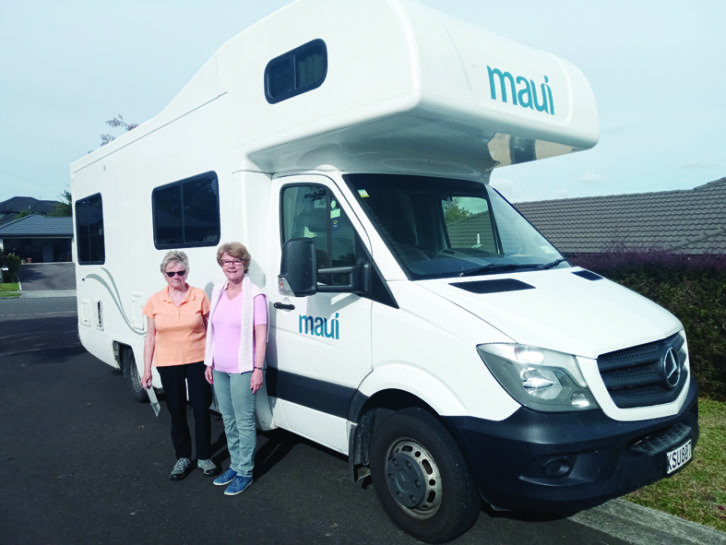
Maui four-berth motorhome (on Mercedes-Benz Sprinter), certified self-contained. Freedom Destinations used THL as the vehicle provider. The ‘van was rather tired inside but it had covered 100,000km.
- We take a look at the motorhomes of New Zealand and Australia.
WHERE WE STAYED
Akaroa
- Top 10 Holiday Park, 96 Morgans Rd, Akaroa
- Web akaroa-holidaypark.co.nz
Geraldine
- Top 10 Holiday Park, 29 Hislop Street, Geraldine
- Web geraldinetop10.co.nz
Portobello
- Portobello Village Tourist Park, 27 Herewaka Street, Portobello
- Web portobellopark.co,nz
Te Anau
- Top 10 Holiday Park, 15 Luxmore Drive, Te Anau
- Web teanautoo10.co.nz
Franz Josef
- Rainforest Holiday Park, 46 Cron Street, Franz Josef
- Web rainforest.nz/holiday-park
Westport
- Westport Kiwi Holiday Park, 37 Dornett Street, Westport
- Web westportholidaypark.co.nz
Nelson
- Top 10 Holiday Park, 230 Vanguard Street, Nelson
- Web nelsoncitytop10.co.nz
Picton
- Top 10 Holiday Park, 70-78 Waikawa Rd, Picton
- Web pictontop10.co.nz
Wellington
- Top 10 Holiday Park, 95 Hutt Park Rd, Lower Hutt
- Web wellingtontop10.co.nz
Napier
- Eskdale Holiday Park, 26 Yule Rd, Eskdale, Napier
- Web eskdaleholidaypark.co.nz
Rotorua
- Top 10 Holiday Park, 1495 Pukuatua Street, Rotorua
- Web rotoruatop10.co.nz
Note: We joined the Top 10 Club (top10.co.nz) at Akaroa, which cost about £20 each. Benefits include 10% discount on site fees, advance booking service, and discounts on the Interislander ferry and some local eateries. Top 10 operates an extensive network of campsites.
Electric pitches for two cost £10-£12 per night (check-in after 2pm, check-out before 10am).
FIND OUT MORE
Freedom Destinations provides several recommended itineraries on its website, which we used to identify some of the major places of interest that we wanted to visit.
We also used Lonely Planet: New Zealand, DK Eyewitness Travel Guide: New Zealand and site information provided at the ‘van pick-up depot.
EXPENSES
TRAVEL
- Flights (premium economy Land to Sydney) £2715pp
- Ferry (vehicle + two people) £225
- Vehicle hire (33 days) £5130
- Express check-out + one-way fee £350
- Fuel (3500km) £275
- (Price of diesel ranged from NZ$1.18 to NZ$1.90 per litre)
EXCURSION/TOURS
- Akaroa Dolphins £95pp
- Doubtful Sound £150pp
- Glacier Helicopters £160pp
- Fullers Ferry, Waiheke Island £25pp
If you liked this…. READ THESE:
Six great reasons for a British staycation
If you’ve enjoyed reading this article, why not get the latest news, reviews and features delivered direct to your door or inbox every month. Take advantage of our brilliant Practical Motorhome magazine SUBSCRIBERS’ OFFER and SIGN UP TO OUR NEWSLETTER for regular weekly updates on all things motorhome related.
The scenery on the drive to Lake Tekapo was amazing enough, but our first view of the lake made us gasp, so striking was its beauty
